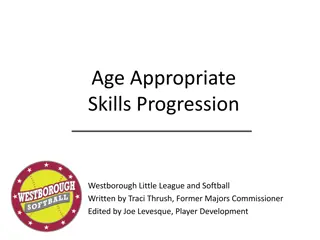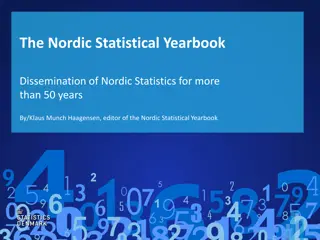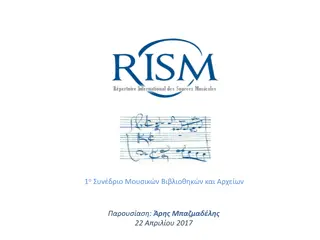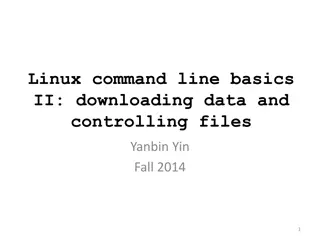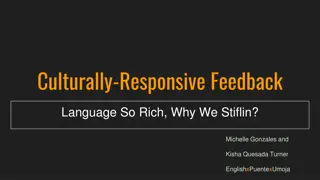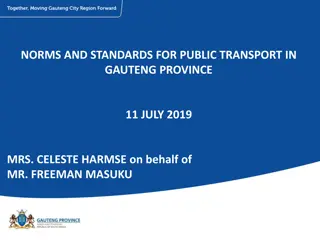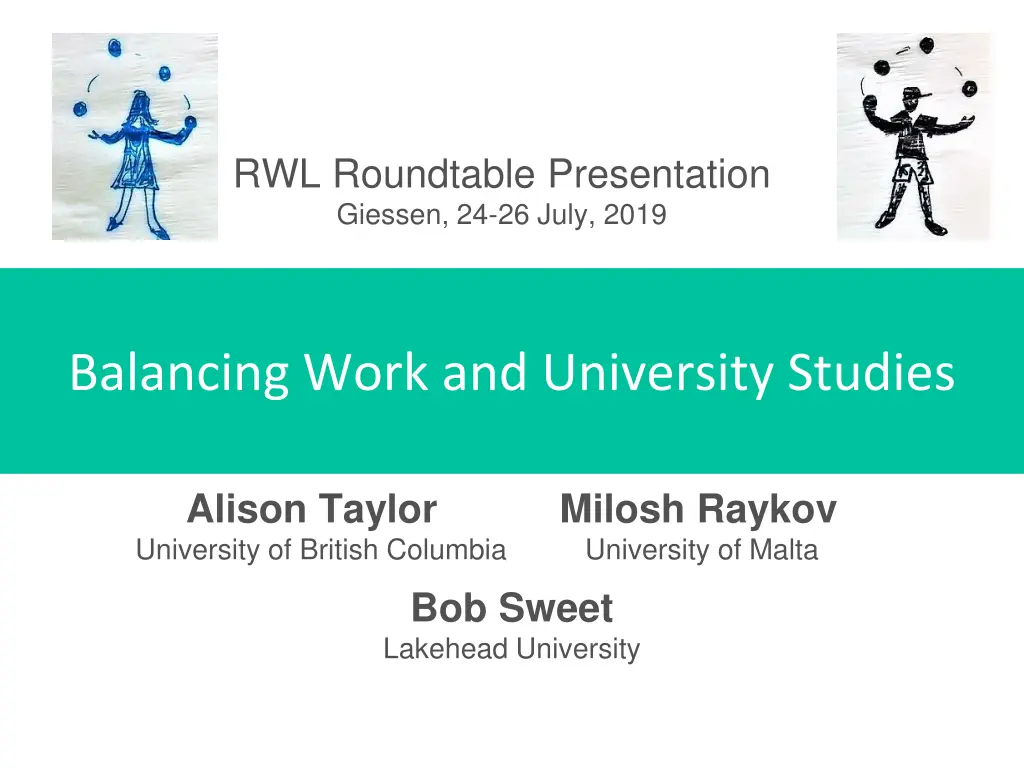
Balancing Work and University Studies: A Research Perspective
Explore the dynamics of students balancing work and university studies, focusing on Canadian undergraduates. Understand work patterns, effects on academic outcomes, and the role of work-integrated learning. Uncover the impact on students' well-being, academic performance, and future aspirations.
Download Presentation

Please find below an Image/Link to download the presentation.
The content on the website is provided AS IS for your information and personal use only. It may not be sold, licensed, or shared on other websites without obtaining consent from the author. If you encounter any issues during the download, it is possible that the publisher has removed the file from their server.
You are allowed to download the files provided on this website for personal or commercial use, subject to the condition that they are used lawfully. All files are the property of their respective owners.
The content on the website is provided AS IS for your information and personal use only. It may not be sold, licensed, or shared on other websites without obtaining consent from the author.
E N D
Presentation Transcript
RWL Roundtable Presentation Giessen, 24-26 July, 2019 Balancing Work and University Studies Alison Taylor Milosh Raykov University of British Columbia University of Malta Bob Sweet Lakehead University
Our topic 1st phase of mixed-methods study of Canadian university students and their term time work. Our interests include a focus on: 1. How students are balancing work and school 2. What kind of work they re doing and how much 3. Why they work, and 4. Socio-demographic differences Also, what difference does WIL make to students experiences and outcomes?
Background Balancing work and university studies has become increasingly common globally. A recent thematic review based on European data suggests that slightly more than half of all undergraduate and graduate students in higher education were combining studies and a paid job (Eurostudent, 2018). In Canada, 57% of students aged 15 to 24 were engaged in paid work in 2017 (Wade, 2018). Most students in Europe reported working at paid jobs for financial reasons and to gain labour market experience (Eurostudent, 2018), findings that are echoed in Canada (Bristow & Nestico-Semianiw, 2014).
Literature highlights There has been growing pressure on universities to increase work-integrated learning (WIL) opportunities for students. WIL is widely viewed as a way to enhance students learning outcomes and may also be used to differentiate undergraduates in a competitive graduate labour market (Jackson, 2015).
The relationship between students work and their other activities impacts their well-being and academic outcomes (Burston, 2017). Time poverty results from the availability of free time and when it s available (Chatzitheochari & Arber, 2012). Butler s (2007) job quality framework: examines the mechanisms through which term-time work benefits or harms school performance. Work-study conflict occurs when the student s work role demands and responsibilities interfere with their school role. But a role in one domain may offer resources in another. Work-study facilitation is thus defined as improvement in the quality of the school role that results from participation in work.
Research Questions 1. What are undergraduate students term-time work patterns (including intensity and types of work) and how do they vary by student demographics (e.g. international, first generation)? 2. How are students work experiences related to academic and other outcomes (e.g., grades, campus engagement, sense of well-being, aspirations)?
Methods and Data Sources This paper draws on preliminary quantitative findings from a mixed methods study of undergraduates at a large Canadian university. Our survey module was attached to an online institutional survey. Respondents to this institutional survey (7,080) were invited to participate in our survey module on their work and study experiences. Our response rate was 1,733 (24%).
Representativeness of sample UBC - V Statistics 2017/18 44,400 (Approximately) HWS Survey 2018 1733 Number of undergraduate students Full time Part time 39,461 (89%) 4939 (11%) 1,515 (89%) 181 (11%) Female Male 24,864 (56%) 19,536 (44%) 1,073 (62%) 659 (38%) Domestic International 33,169 (75%) 11,209 (25%) 1,422 (82%) 285 (17%)
Socio-Demographic Profile of Participants by Work Status Socio-demographic Characteristics N Non-Working (%) 775 (45%) Working (%) 933 (55%) Employment status (Total) Gender (Chi-sq= 24.482 p< .001) Male Female SES (parents' occupation) (Chi-sq= 12.411 p< .002) Upper Mid/High Middle Lower Mid/Low Parents' Education (Chi-sq= 9.257 p< .002) Neither parent completed university One/both parents completed university Combined Student Status* (Chi-sq= 8.219 p< .001) Born in Canada Immigrant International 1,733 651 1056 53 41 47 59 918 135 448 48 44 38 52 56 62 438 1204 39 47 61 53 972 427 282 43.6% 43.3% 52.8% 56.4% 56.7% 47.2%
Students Employment Status Prefer more hours, 13 Can't find a job, 9 Prefer same number, 32 Not employed, 37 Prefer less hours, 10
Hours of Work and Learning In a TYPICAL week during the current academic year (September 2017 to now), how much time do you spend doing the following actives? Mean (hours) N Paid work [Students involved in paid work] 14.3 933 Unpaid or volunteer work 2.95 1708 Social and leisure activities (e.g. meet with friends, ) 9.2 1707 Attending classes, tutorials, or labs 16.8 1707 Studying and other academic activities outside of class 16.5 1707
Reasons for Working Two broad categories: 1) for financial reasons, and 2) for experience or social reasons. The most common financial motivation involved working for additional spending money (74% VI or SI) while the most common non-financial reason involved gaining work experience (70% VI or SI). Among more pressing financial motivations for work is the need to meet basic needs like food and shelter (57% VI or SI). The strongest statistically significant correlation is between students hours of work and their financial needs.
Where Students Work The top three sectors overall were retail (18%); accommodation, food or beverage services (18%); and teaching (16%). Almost one-quarter of respondents participated in WIL: cooperative education (10%), the Work Learn Program (10%), and internships (3%). Term-time WIL disproportionately involves work in Research and Development (38%) and Entertainment and Recreation (18%). Non-WIL disproportionately involves work in Accommodations or Food Service (24%) and Retail or Sales (24%).
Impact of Different Types of Work on Studies (SA) ... I miss classes because of work ... I go to university tired ... I spend less time studying ... my work limits my leisure time Because of work,.. Research or development Retail or sales Accommodation or food services Teaching or tutoring, Health services Entertainment or recreation Other TOTAL Chi-square 9 16 4 21 17 22 3 33 19 28 6 32 7 10 4 14 10 15 4 25 10 16 6 12 12 13 21 19 5 4 24 24 48.740** 63.305*** 32.952ns 61.562**
Logistic Regression : WIL and GPA Model #1 Adj. odds .016 Model #2 Adj. odds .009 .494 .121 .127 .066 .003 .263 .001 .379 .315 .769 .549 .094 .825 .050 p p WIL(Int/W-L) vs NVIL Female vs Male SES: Lower Mid/Low Middle Upper Mid/High I Status: Born in Canada Immigrant International Year of study: 1st year 2nd year 3rd year 4/5th year With significant debt With some debt With no debt 1.662 1.832 1.124 1 1.571 1.384 1 .807 .430 1 .783 .934 1.144 1.071 1.527
The Effects of Term-Time Work A logistic regression was undertaken to test the importance of different factors associated with a high GPA for working students. Model 1 examined the relationship between WIL and other term-time work (NWIL) on grades. From this analysis, we learn that students involved in WIL are 60% more likely to achieve a high GPA than others. This finding is no doubt partly due to selection factors (high achieving students are more likely to attain WIL positions) but also may be due to the fact that WIL is more regulated and often more flexible than NWIL.
Effects, contd Model 2 added a number of socio-demographic factors into the mix. Findings show middle and upper- middle/high SES, domestic students, those with no debt, and those involved in WIL are more likely to achieve a high GPA. While SES and international student status were used as controls in our regression analysis, they deserve further analysis, as do student motivations for different work types.
Summary and next steps We re interested in what difference it makes for students (in terms of well being and academic outcomes) when they re engaged in WIL or other highly regulated and perhaps more flexible work connected to their studies. Since term-time work is likely to impact students prospects after studies, we wonder if they feel they have choices about TT work (and if this differs by student demographics) as well as how they make these choices. In short, how do they juggle school and work over time?




